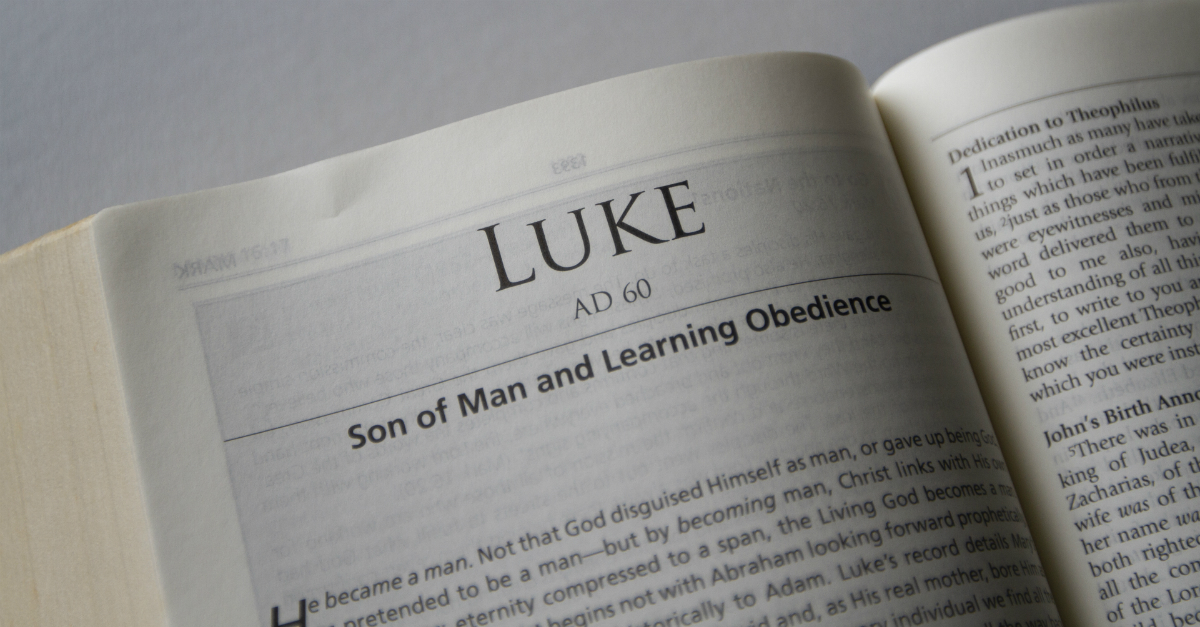Luke Eisner - Uncovering A Deeply Personal Story
You know, there are some stories that just stick with you, aren't there? They come from a place of deep conviction, shaped by someone who truly lived through what they share. This particular telling, it feels really close to the heart, a fresh take, you might say, from a person who truly saw and believed in the core ideas held dear by a community of faith. It’s a piece of writing that carries a distinctive voice, a very individual way of looking at things, and it feels like a gift, in a way, from someone who was right there, experiencing it all.
This remarkable piece of writing, it isn't just a simple retelling; it's a truly personal contribution, a unique offering from someone who was, you know, a direct observer of the shared convictions of a spiritual group. It’s a work that stands out, not just for its content, but for the very particular way it was put together, reflecting the individual who shaped it. It’s a bit like getting a peek into someone’s innermost thoughts about something incredibly significant.
So, we're talking about something that feels very much like a first-hand account, a deeply felt expression of belief. It’s a testament, perhaps, to the power of personal conviction, how one person’s perspective can shed such a bright light on collective understanding. It’s a piece that has resonated through time, and it started with someone who truly felt compelled to put their experiences and insights down on paper, for all to consider, actually.
Table of Contents
- Who Is Luke Eisner - The Writer Behind the Words?
- What Was Luke Eisner's Main Aim?
- How Did Luke Eisner's Work Come to Be Recognized?
- What Historical Moments Did Luke Eisner Touch Upon?
- The Process of Luke Eisner's Declaration
- A Glimpse into the Scenes Luke Eisner Described
- The Depth of Luke Eisner's Conviction
- Reflecting on Luke Eisner's Contribution
Who Is Luke Eisner - The Writer Behind the Words?
When we talk about Luke Eisner, we're really exploring the mind and intentions of a significant figure whose work has shaped countless perspectives. This person, as the historical record suggests, was a direct participant in, and a faithful reporter of, the foundational beliefs of an early religious community. His writing, you see, stands as a very individual creation, a fresh perspective that came directly from his own experiences and insights. It’s not simply a collection of facts; it's something infused with his own spirit and understanding. He was, in essence, a witness, someone who saw things unfold and felt a deep need to share what he understood about the faith that guided his community. This particular way of telling the story, it gives us a glimpse into his character, into the kind of person he was, and the things that mattered most to him, very much so.
His contribution is quite distinct, actually, standing out as a singular effort to capture and convey something profoundly meaningful. He wasn't just copying what others had said; he was crafting something new, something that bore his own mark. This original quality is a key aspect of his legacy, showing us that he was more than just a recorder; he was an interpreter, a storyteller with a purpose. It's a bit like someone painting a portrait not just of a scene, but of the very essence of a belief system, all through their own lens. That’s the kind of dedication and personal touch we find in his work, that.
To fully appreciate Luke Eisner's impact, we should consider him as a pivotal voice, someone who took on the momentous task of documenting a spiritual movement. His role as a "witness" suggests a level of firsthand engagement or, at the very least, a deep connection to those who were. This isn't just some detached historical account; it's a piece born from personal conviction, reflecting the very heart of the faith it describes. So, when you pick up his writings, you're not just reading words; you're encountering the sincere effort of a person deeply committed to sharing a vital message, basically.
Personal Details and Bio Data of Luke Eisner
| Name | Luke (as referenced in historical accounts of his writings) |
| Primary Role | Writer of a significant historical and spiritual account |
| Key Contribution | Composing a personal and original narrative about faith |
| Motivation | A deep desire to share profound spiritual truths |
| Historical Context of Work | Period of a census during Quirinius's time |
| Recognition | His work's quality has been affirmed by recent scholarly study |
What Was Luke Eisner's Main Aim?
So, what really drove Luke Eisner to put pen to paper? Well, his principal wish, it seems, was to lay bare the deep, somewhat hidden truths about Christ for all of us to grasp. He wasn't just looking to tell a simple story; he wanted to pull back the curtain, so to speak, on something truly profound, something that might feel a little mysterious at first glance. His writing, therefore, isn't just narrative; it's an invitation to ponder something much larger than ourselves. It’s about revealing the core of a spiritual reality, making it accessible and understandable for his audience. This desire, you know, really shines through in every passage, guiding his choices of what to include and how to present it.
He was, in a way, like someone trying to solve a complex puzzle and then showing everyone else how the pieces fit together. The "mystery of Christ" he sought to present wasn't about creating more confusion; it was about clarifying, about bringing light to something that might have seemed obscure. It was his deep conviction that these truths were important, even vital, for people to truly understand. This focused intention, this singular purpose, gives his entire work a sense of direction and gravity. It’s clear he felt a weighty responsibility to communicate these profound insights with clarity and impact, that.
Furthermore, his aim extended to showing how Christ, through his actions and teachings, brought to completion a grand scheme, a divine intention that had been unfolding over time. This idea of fulfillment is central to his message, suggesting that events were not random but part of a larger, pre-determined design. It’s a powerful concept, really, implying a sense of purpose and ultimate meaning in the unfolding of history. Luke Eisner wanted his readers to see this overarching pattern, to understand that Christ’s presence was the culmination of something truly significant. He wanted to show that what had been promised, what had been hoped for, had indeed come to pass, basically.
How Did Luke Eisner's Work Come to Be Recognized?
It’s quite interesting, actually, how the standing of Luke Eisner’s writing has been affirmed over time. Recent scholarly investigations, you see, have really confirmed the high quality of his composition. This isn't just about personal opinion; it's about rigorous examination by people who study ancient texts and historical records. They've looked at his methods, his sources, and his way of putting things together, and they've found it to be remarkably well-crafted and reliable. It’s a bit like a chef’s long-standing recipe finally getting a stamp of approval from modern food critics, if you will.
This validation from contemporary researchers speaks volumes about the enduring value of his contribution. It suggests that his careful approach, his commitment to presenting things accurately, has stood the test of time. For a work written so long ago, it's quite something to have its meticulousness and integrity upheld by modern academic scrutiny. It shows, too it's almost, that even after centuries, the way he approached his task continues to impress those who delve deeply into such historical documents. This kind of affirmation really solidifies his place as a significant voice from the past, very much so.
So, when we consider Luke Eisner's lasting influence, it’s not just because his message was important, but also because the vehicle for that message – his actual writing – was of such a high caliber. The fact that its quality has been "vindicated" means that any doubts or questions about its historical reliability or literary merit have largely been put to rest by careful study. It's a strong endorsement, really, for a piece of work that aims to convey such profound spiritual and historical truths. This recognition helps us appreciate the depth of his effort and the lasting impact of his words, you know.
What Historical Moments Did Luke Eisner Touch Upon?
Luke Eisner, in his careful recounting, makes sure to place his narrative within a specific historical backdrop, which is pretty significant. He mentions, for instance, a particular population count, noting that this was the very first one that took place while Quirinius held a position of authority. This detail isn't just a throwaway line; it helps to ground his spiritual story in real-world events, giving it a tangible connection to the time it describes. It’s a bit like a filmmaker setting a scene with specific historical markers to make it feel more authentic. This attention to such details shows a commitment to historical accuracy, or at least to providing a clear context for his readers, that.
By including such specific historical references, Luke Eisner helps us understand the broader environment in which the events he describes unfolded. It’s not just a story floating in time; it's firmly planted in a particular period, allowing readers to connect it to other known historical facts. This kind of historical anchoring adds a layer of credibility to his account, suggesting that he was careful about the details, or at least aware of them. It helps to paint a more complete picture of the world in which these profound spiritual developments were taking place, basically.
This mention of the census during Quirinius’s time is, in some respects, a subtle but important way Luke Eisner establishes the setting for his narrative. It’s a reminder that even the most spiritual stories happen within a real, lived context, influenced by the political and social currents of their day. It shows his awareness of the wider world and his desire to present his material not as abstract theology, but as events that truly happened, at a specific point in time. This kind of detail, you know, gives his work a certain weight, a sense of being firmly rooted in the past.
The Process of Luke Eisner's Declaration
It seems, too it's almost, quite a few folks had already decided to write down what was generally accepted as true among them. They wanted to set out an ordered account of things that were most surely believed, just as these things had been passed down to them from the very beginning. Luke Eisner was, therefore, working within a tradition, a recognized effort by many to document and clarify these foundational beliefs. He wasn't the first to feel this urge to record; he was part of a broader movement of people trying to preserve and explain what they held dear. This context is important, showing that his work was part of a collective endeavor, not an isolated act, very much so.
This tells us a little about the environment in which Luke Eisner created his work. There was, apparently,

Luke - Bible Book Chapters and Summary - New International Version

Is the Gospel of Luke a Greco-Roman Biography? - Biblical Archaeology

ArtStation - Luke Skywalker - Return of the Jedi